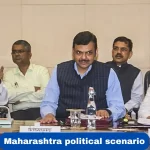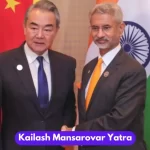Maharashtra Voter Turnout Hits Record High: What It Means for the Election
Maharashtra saw an impressive voter turnout in the recent Assembly elections, reaching 65.1%, a significant jump from previous years. This turnout is the highest recorded in the state since 1995 when it peaked at 71.69%. The numbers highlight a growing voter engagement and a highly competitive battle between the ruling Mahayuti alliance and the Opposition Maha Vikas Aghadi (MVA).
The increased voter turnout could play a decisive role in shaping the election outcome, making it one of the most crucial factors this year.
Turnout Trends in Maharashtra
In comparison to recent elections, the latest Assembly election turnout has seen a sharp rise:
- 2024 Assembly elections: 65.1% turnout (highest in nearly three decades).
- 2019 Assembly elections: 61.4%.
- 2024 Lok Sabha elections: 61.39%.
This marks a rise of nearly 3.5% in voter turnout, reflecting the heightened interest among voters in this election. This increase is especially significant because the state now has 9.69 crore registered voters, up from 8.85 crore in 2019, marking a 9.5% growth in the voter base. A larger voting population combined with a higher turnout is expected to heavily influence the election results.
Why the Higher Turnout?
The surge in voter participation is largely attributed to the intense campaigns run by both the ruling Mahayuti and the Opposition MVA. These alliances fought hard to win voter support, using targeted outreach and welfare promises.
Ruling Alliance (Mahayuti)
The Mahayuti alliance consists of the BJP, Eknath Shinde’s Shiv Sena, and Ajit Pawar’s NCP. During the Lok Sabha elections earlier this year, the Mahayuti collectively garnered 42.71% of votes, a strong indicator of its continued influence.
Opposition Alliance (MVA)
The MVA alliance, led by Uddhav Thackeray’s Shiv Sena faction, Sharad Pawar’s NCP faction, and the Congress, secured 43.91% of votes in the same Lok Sabha elections. This slight lead has made the competition incredibly close, with both alliances vying for dominance.
The voter turnout increase suggests that these alliances have successfully energized their bases, pulling in new voters and undecided individuals.
Key Factors Driving the Vote Surge
Fierce Campaigns
Both alliances ramped up their outreach efforts with rallies, advertisements, and promises. The BJP-led Mahayuti focused on welfare schemes like “Ladli Behen,” targeting women voters, while the MVA emphasized its stance as a protector of democracy and its opposition to divisive politics.
Population Growth and Increased Awareness
With the voter base expanding to nearly 9.69 crore, this election saw more first-time voters and a renewed sense of participation among the public.
Impact of Local Issues
Local concerns like inflation, unemployment, and the performance of the ruling government also played a role. These issues, coupled with welfare programs, made voters more engaged than in previous years.
What Does the Turnout Mean for the Results?
A higher turnout generally indicates a closer contest, especially when both alliances have almost equal vote shares in recent elections. The 3.5% increase in voter participation could tilt the scales in favor of either alliance.
Key observations:
- Youth Voters: With a growing number of young, first-time voters, alliances that appealed to this demographic could gain a significant advantage.
- Women Voters: Welfare schemes like “Ladli Behen,” which directly target women, might help the ruling Mahayuti secure additional support.
- Urban vs Rural Divide: Turnout differences between urban and rural areas will also be critical. Urban areas have typically favored the BJP, while rural voters lean toward the Congress and regional parties like the Shiv Sena.































